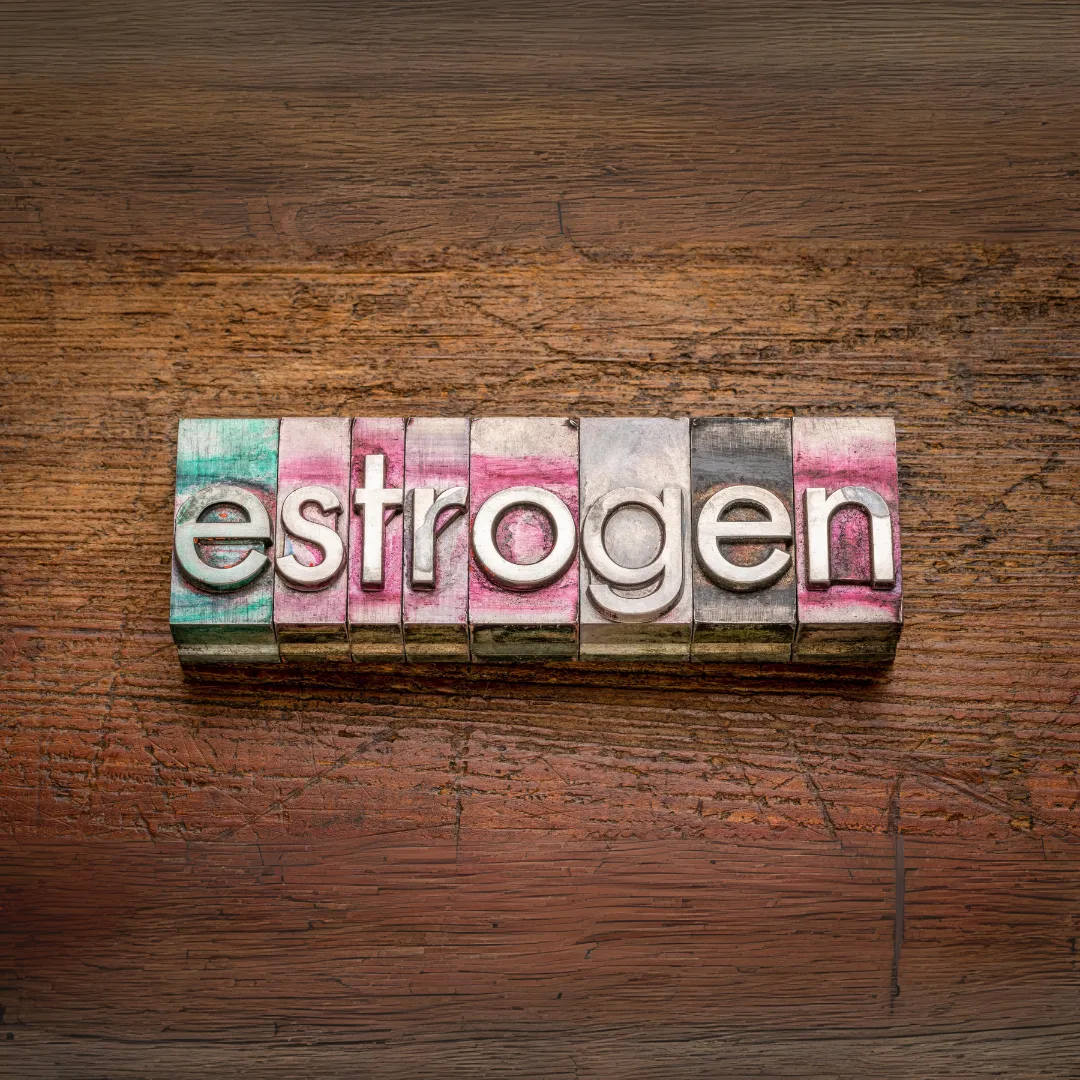Estrogen Hormone | Effects on the Female Body | LYGOS 2025

Estrogen Hormone
As the human body works in harmony with nature’s marvellous balance, hormones play a vital role in this process. The many physical and mental changes we experience every day without realising it are part of an orchestra directed by these biochemical messengers. Maintaining the ideal hormonal balance in our bodies is critical to maintaining both our mental peace and physical health. However, some hormones stand out more in this complex order, especially for women.
Estrogen, one of these hormones, is one of the cornerstones of women’s health. This hormone, which regulates certain functions not only for women but also for men, acts as an element of balance in the body. Estrogen has a wide range of effects from reproductive health to skin elasticity. However, how this hormone works in our body and from which sources it is supplied is still a matter of curiosity for many people.
Although women dominate estrogen production, men also benefit from this hormone, but at lower levels. Estrogen production occurs predominantly in the ovaries, with adrenal glands and adipose tissue also contributing. Among plant sources, phytoestrogens, which are found in foods such as soya beans and flaxseed, are particularly noteworthy. These natural compounds contribute to hormonal balance by creating effects similar to estrogen in the body.
What is Estrogen?

Estrogen is a hormone that plays a key role in the functioning of the body and drives many biological processes. Although it is produced by both women and men, it has a particularly strong effect on women’s reproductive health. The largest source of estrogen in women is the ovaries. This hormone regulates many important processes, from the menstrual cycle to fertility. It is also known to have a much wider range of effects, such as keeping skin supple, helping to keep bones strong and protecting cardiovascular health.
It is important to remember that estrogen is important not only for women but also for men’s health. Although men produce lower levels of this hormone, it provides positive effects in different areas from reproductive functions to bone health. However, one of the most striking effects of estrogen occurs with menopause. When women enter menopause, estrogen levels in the body drop severely and this drop causes various symptoms. Hot flushes, osteoporosis and mood swings are among the most well-known symptoms of estrogen deficiency. Therefore, balancing estrogen levels during menopause is critical for maintaining quality of life.
Maintaining a balanced level of estrogen in the body plays a major role not only in the ageing process but also in maintaining general health. However, too much of this hormone can also bring some risks. Research has shown that high estrogen levels may be associated with the development of some types of cancer. In particular, studies on breast cancer risk show that estrogen levels may increase this risk factor. Therefore, being aware of the effects of estrogen in the body is of great importance for maintaining a healthy life.
What Contains Estrogen?

Many foods that affect the estrogen balance in the body can help support hormone levels naturally. Some foods show estrogen-like effects thanks to the phytoestrogens they contain and therefore play an important role in maintaining hormone health. So, what contains estrogen?
Among fruits, options such as apples, plums, pears and grapes stand out with their estrogen levels. These fruits are both delicious and full of ingredients that contribute to the body’s hormonal balance. Legumes are also one of the food groups that positively affect estrogen levels. Especially beans, soya beans, chickpeas and lentils are among the foods that support estrogen production. Especially soya beans contain powerful phytoestrogens called isoflavones and have important effects on hormone health.
Vegetables are one of the most basic foods that contribute to a healthy hormone balance. Vegetables such as cabbage, spinach, garlic, onions and sweet potatoes can naturally support the estrogen the body needs. Whole grains also play a role in this balance. Barley and brown rice in particular are a source of healthy carbohydrates and contain phytoestrogens, which have a positive effect on hormone balance.
In addition, certain beverages can also help to increase estrogen levels. Tea and wine are particularly rich in plant-derived components and can support the body’s hormonal system. However, getting these nutrients naturally through a balanced diet is one of the safest and healthiest ways to benefit the body.
Symptoms of Excess Estrogen

When the body produces more estrogen than normal, it can lead to a condition known as ‘estrogen excess’ or in other words ‘estrogen dominance’. This condition indicates an imbalance of hormones and can be a harbinger of various health problems. High levels of estrogen pose significant health risks, especially for women. It can be linked to serious diseases such as breast and ovarian cancer, insulin resistance, endometriosis, polycystic ovary syndrome (PCOS) and adrenal tumours. Symptoms of excess estrogen hormone in women are more than one.
Excess estrogen is manifested by various symptoms in the body. Bloating, weight gain and breast tenderness are among the most common symptoms of this condition. At the same time, hormonal imbalances can cause sudden changes in mood. Sleep disturbances, exacerbation of premenstrual syndrome and sexual dysfunction are also common problems for people with excess estrogen. However, high estrogen levels don’t just stop with physical symptoms; they can also have negative effects on heart health.
The risk of high blood pressure and blood clots may increase, which can be a precursor to more serious cardiovascular problems. To prevent such negative effects of estrogen, it is important to check hormone levels regularly. Maintaining hormone balance can both improve quality of life in the short term and help prevent more serious health problems in the long term. In conclusion, maintaining hormonal balance is critical for a healthy body and mind.
Why Does Estrogen Rise?

Elevated levels of estrogen in the body can occur under the influence of various factors. This increase can be associated with the body’s excessive production of estrogen, insufficient breakdown or excretion of estrogen. At the same time, the use of estrogen-containing drugs can also lead to an increase in this hormone. So, why does estrogen rise?
Medication use: Some medications, especially those used to increase low estrogen levels, can increase the hormone estrogen in the body. Drugs containing high doses of estrogen, such as birth control pills, can affect the balance of this hormone and cause an increase.
Xenoestrogens: Synthetic chemicals called xenoestrogens can enter the body and act like natural estrogen. The most common examples of xenoestrogens are bisphenol A (BPA) and phthalates, which are found in plastic products, cleaning materials and even some cosmetics. These substances can be recognised by the body as real estrogens and can lead to hormonal imbalance.
Body fat percentage: Adipose tissue produces small amounts of estrogen. However, as the amount of fat in the body increases, this production also increases. In overweight or obese individuals, high body fat can significantly increase estrogen levels in the body.
Stress: Under intense stress, the hormone cortisol may increase in the body, while the hormone progesterone may decrease. This hormonal change can indirectly lead to increased estrogen levels. Under chronic stress, this imbalance becomes more pronounced and can lead to estrogen dominance.
Liver function: The liver bears a great responsibility for the breakdown and elimination of estrogen from the body. However, when liver function is impaired or diseased, estrogen becomes difficult to metabolise and tends to accumulate in the body. Excessive alcohol consumption can also inhibit this function of the liver, slowing down estrogen metabolism.
As a result, the elevation of estrogen in the body can be a result of various lifestyle and environmental factors. In order to keep estrogen levels in a healthy balance, it is necessary to pay attention to both internal and external factors. A healthy lifestyle may be the key to maintaining hormonal balance.
Why Does Estrogen Fall?

Low estrogen levels often occur as a natural consequence of ageing. Especially in women entering the menopausal period, a marked decrease in hormone levels is observed. However, various factors other than aging can also cause a decrease in estrogen. So, why does estrogen decrease?
Eating disorders: Eating disorders such as anorexia and bulimia nervosa make it difficult to maintain hormone balance. When the body does not get the essential nutrients it needs, hormone production is also negatively affected. Such conditions can lead to a serious drop in estrogen levels.
Genetic factors: Genetic disorders such as Turner syndrome and Fragile X syndrome are linked to inborn hormonal imbalances. These genetic disorders can lead to inadequate estrogen production.
Primary ovarian failure: Also known as early menopause, this condition occurs when the ovaries lose their function before the age of 40. Early dysfunction of the ovaries stops estrogen production and leads to the end of the menstrual cycle.
Autoimmune diseases: Autoimmune diseases occur when the immune system attacks healthy tissues and organs. This process can also affect the ovaries and cause estrogen levels to drop.
Pituitary gland problems: The pituitary gland is an important hormone centre that regulates estrogen production in the body. Dysfunction of the pituitary gland can lead to a decrease in estrogen production, resulting in hormonal imbalances.
In addition to these factors, radiotherapy, chemotherapy, malnutrition, heavy exercise and stress are other contributors to low estrogen levels. The effects of these conditions on hormone balance can negatively affect quality of life. Fortunately, one of the methods commonly used to treat low estrogen levels is hormone replacement therapy. This treatment helps to restore hormone balance by replacing the missing estrogen.
Low Estrogen Symptoms

Low estrogen symptoms are often considered a natural sign that a woman is approaching menopause. While this is considered normal at the age when menopause is approaching, low estrogen levels outside of menopause can be a sign of different health problems. Fertility problems, malnutrition or Turner syndrome, a genetic disorder, are some of the factors that can lead to this condition. So, what are the symptoms of low estrogen?
Breast tenderness: Decreased estrogen levels can cause pain and tenderness in the breasts.
Weak or brittle bones: Estrogen plays an important role in bone health. Low levels can lead to reduced bone density and bone fractures.
Night sweats and hot flushes: These symptoms, which are common during menopause, may be a sign of low estrogen levels.
Menstrual irregularity or absence of menstruation: Imbalances in the estrogen hormone can cause the menstrual cycle to be disrupted or even stop completely.
Difficulty concentrating: Low estrogen can lead to problems with focus and a decline in mental performance.
Headaches: Changes in oestrogen levels can lead to increased headaches.
Fatigue and sleep problems: A drop in hormone levels can trigger loss of energy and sleep problems.
Mood swings: Depression, irritability and emotional instability are among the negative effects of low estrogen on mood.
Vaginal dryness and pain during sexual intercourse: Decreased estrogen levels can cause loss of moisture in the vaginal tissues, causing discomfort during sexual intercourse.
How to Increase Estrogen?

There are various natural and effective methods that can be applied to increase estrogen. Adopting a healthy lifestyle to ensure hormone balance is very important in this process. Here are some methods that can be preferred to increase estrogen:
Regular exercise is one of the most basic steps to be taken to balance hormone levels. Exercise done in moderation positively affects hormone production by keeping the body mass index at healthy levels. In addition, an active sexual life can contribute to the natural production of hormones.
Avoiding stress is another important element of maintaining estrogen levels. Chronic stress can cause a decrease in estrogen in the body by disrupting hormone balance. Therefore, avoiding stress and learning stress management has a positive impact on hormone health. Likewise, diet also plays a big role. A correct and balanced diet supports hormone production, while adequate sleep helps to maintain the body’s natural rhythm.
In addition, limiting caffeine consumption can help maintain estrogen levels. In addition, avoiding alcohol and smoking also provides great benefits not only for general health but also for hormonal balance. Plant-based estrogens, known as phytoestrogens, can be effective in relieving hot flushes that are common during menopause.
There are various natural and effective methods that can be applied to increase estrogen. Adopting a healthy lifestyle to ensure hormone balance is very important in this process. Here are some methods that can be preferred to increase estrogen:
Estrogen Treatment
Estrogen treatment, in addition to increasing estrogen levels, combined hormone therapies are also an effective option in this process. These treatments offer different ways to regulate the amount of estrogen in the body. Oral, vaginal, intramuscular injection and transdermal (through the skin) forms are among the commonly used methods of estrogen therapy.
Estrogen hormone treatment has an important role in solving the problems faced by women, especially in the postmenopausal period. This treatment is effective in alleviating menopausal symptoms and reducing the risk of osteoporosis, such as osteoporosis. In addition, estrogen therapy is used to treat low estrogen conditions such as hypoestrogenism and plays an important role in the treatment of certain types of cancer, particularly invasive breast cancer and advanced prostate cancer. The effects of estrogen on cardiovascular health are also very valuable.
This hormone increases HDL levels, commonly known as ‘good cholesterol’, and decreases LDL levels, commonly known as ‘bad cholesterol’. Thanks to these properties, estrogen therapy is a powerful factor in reducing the risk of coronary artery disease in postmenopausal women. The role of estrogen in contraception is also critical. Ethinyl estradiol in oral contraceptives provides an effective method of contraception by preventing ovulation during the menstrual cycle. This type of medication is used as a reliable option to prevent pregnancy while regulating hormone levels.


